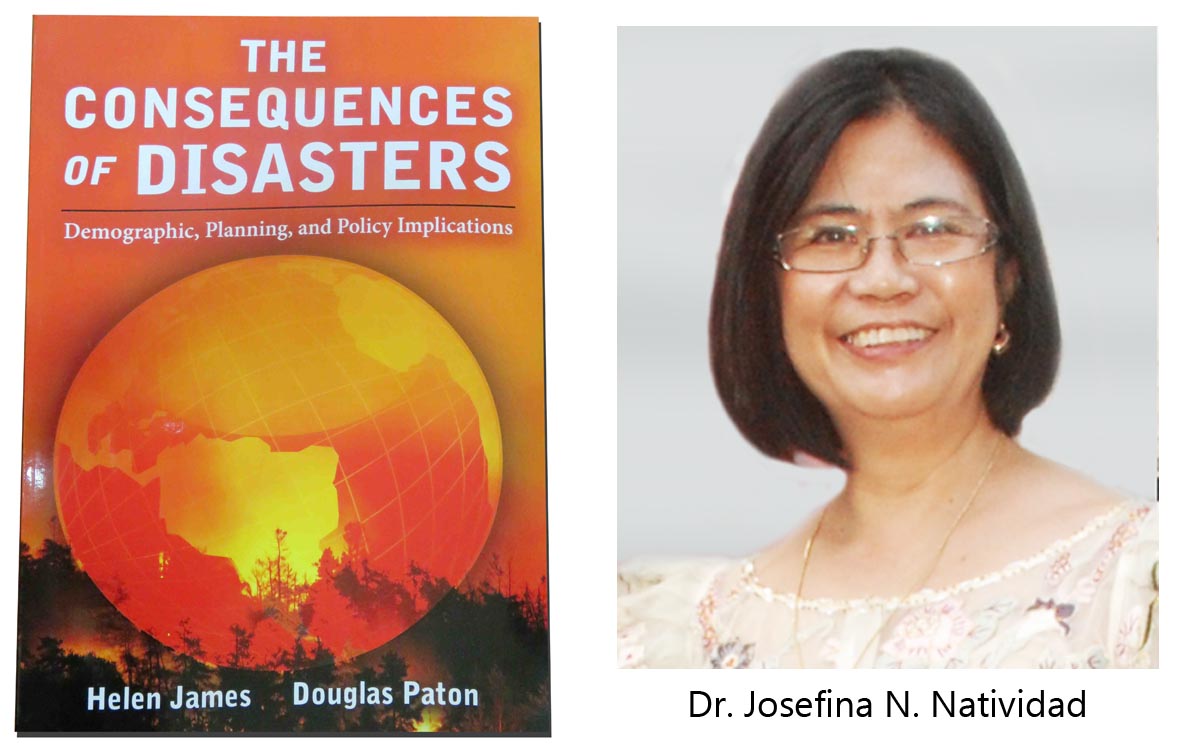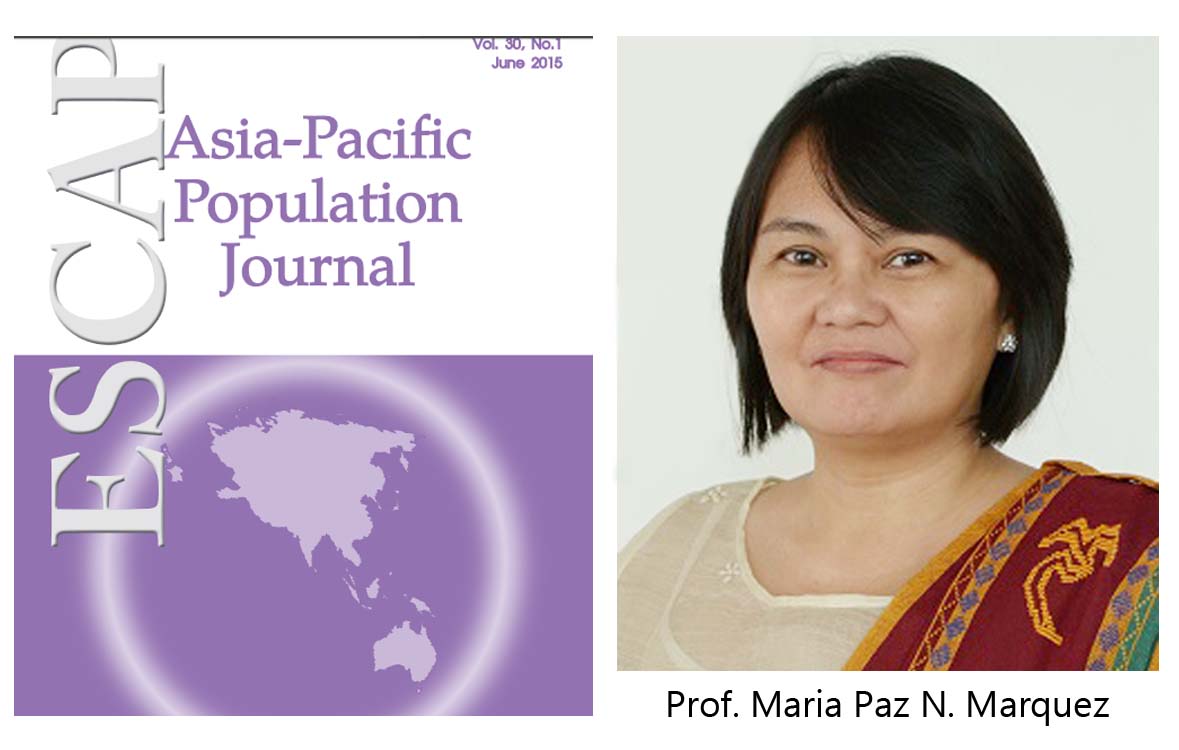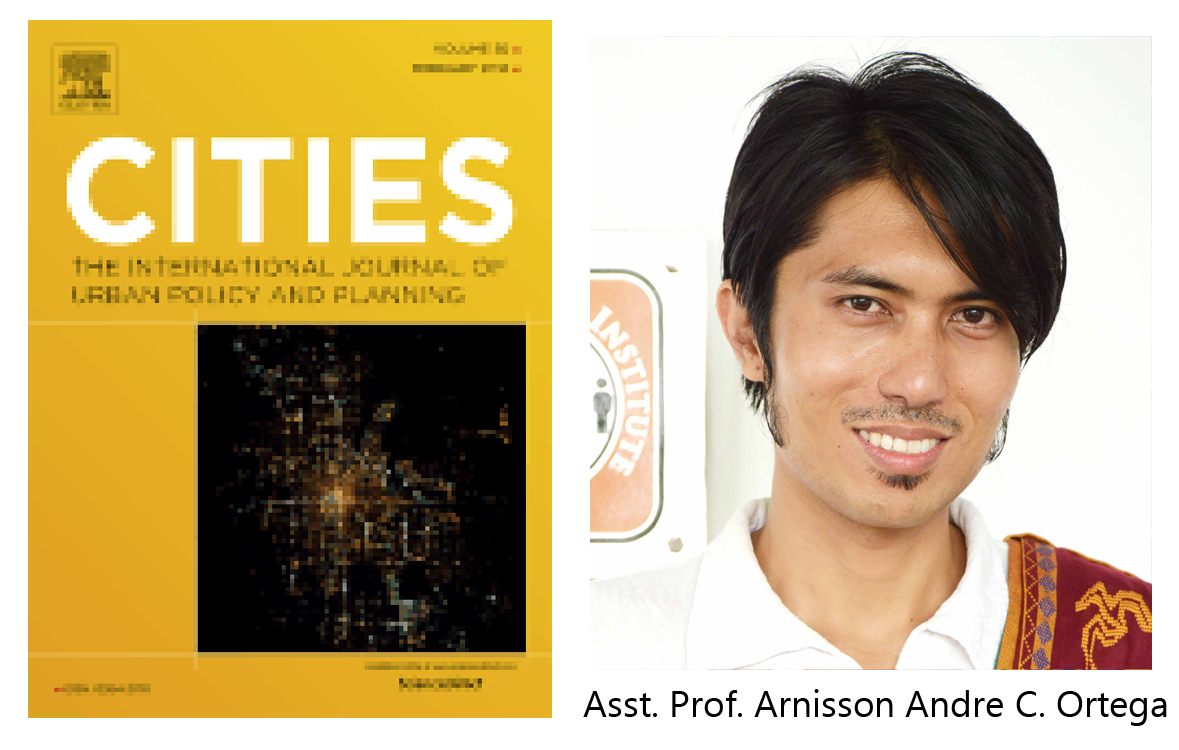Three members of the UP Population Institute faculty had their respective research work printed in international publications in 2015.
Dr. Josefina N. Natividad’s research on the impacts of the 1991 Mt. Pinatubo eruption was published in The Consequences of Disaster: Demographic, Planning, and Policy Implications (James, H. & Paton, D., eds., 2015, Charles C. Tomas Publisher Ltd.).
Dr. Natividad’s "Consequences of the Mt. Pinatubo Volcanic Eruption" uses a mix of quantitative and qualitative methodologies to reveal the demographic consequences of the Mt Pinatubo eruption and consequent disruptions from lahar flows over the long term. Specifically, census data from 1980-2010 from four provinces were used to investigate population growth rates and some indirect indicators of fertility and migration, among others. Key informant interview was also used to delve on the subjective meanings and personal consequences of the demographic trends at the level of individual and family lives and at the level of government response over the short and the long term.
Meanwhile, Prof. Maria Paz Marquez’s research on unintended pregnancies was published in Vol. 30, No. 1 (June 2015) of the Asia-Pacific Population Journal which was devoted to research on unintended pregnancy in Asia.
Prof. Marquez’s "Unintended Pregnancies and Prenatal, Delivery and Postnatal Outcomes Among Young Women in the Philippines" examines the association between pregnancy intention among young Filipino women and prenatal, delivery and postnatal outcomes using the 2013 Young Adult Fertility and Sexuality survey, a nationally representative survey of 19,178 Filipino youth aged between 15 and 24. Contingency tables and chi-square tests were employed to assess significant bivariate associations between pregnancy intention and the selected prenatal, delivery and postnatal outcomes. For the multivariate analysis, a set of binary logistic regression models were used to examine associations between pregnancy intention and each of the identified outcome variables controlling for other factors.
Finally, "Mega-regions in the Philippines: Accounting for Special Economic Zones and Global-local Dynamics" co-authored by Dr. Arnisson Andre C. Ortega, Johanna Marie Astrid E. Acielo, and Maria Celeste H. Hermida was published in volume 48 (November 2015) of the journal Cities. The authors use a spatiodemographic approach on emergent mega-regions in the Philippines defining them beyond static state-delimited urban boundaries and considering the global-local dynamics that underlie their formations. They use municipal-level demographic variables (population density, percentage change across census years 1990, 2000, 2010) to analyze the recent and future trajectories of the regions along with special economic zones..
The journal article is an output from a university-funded project headed by Dr. Ortega called Spaces in Transition: Mapping Manila’s Peri-urban Fringe. Acielo and Hermida are graduate students at the UPPI and worked with Dr. Ortega on this project.
The article has won a UP International Publication Award.
Share



